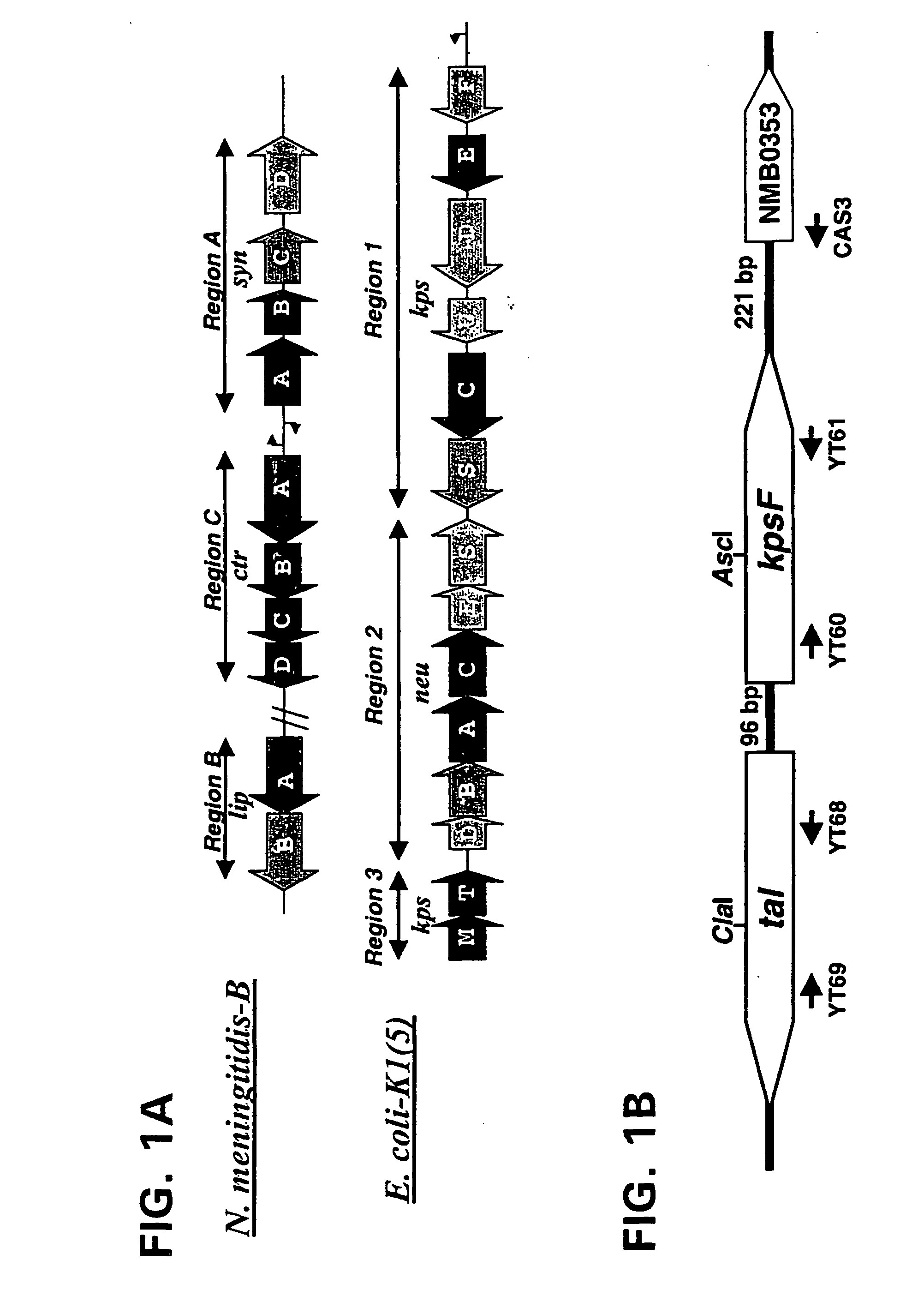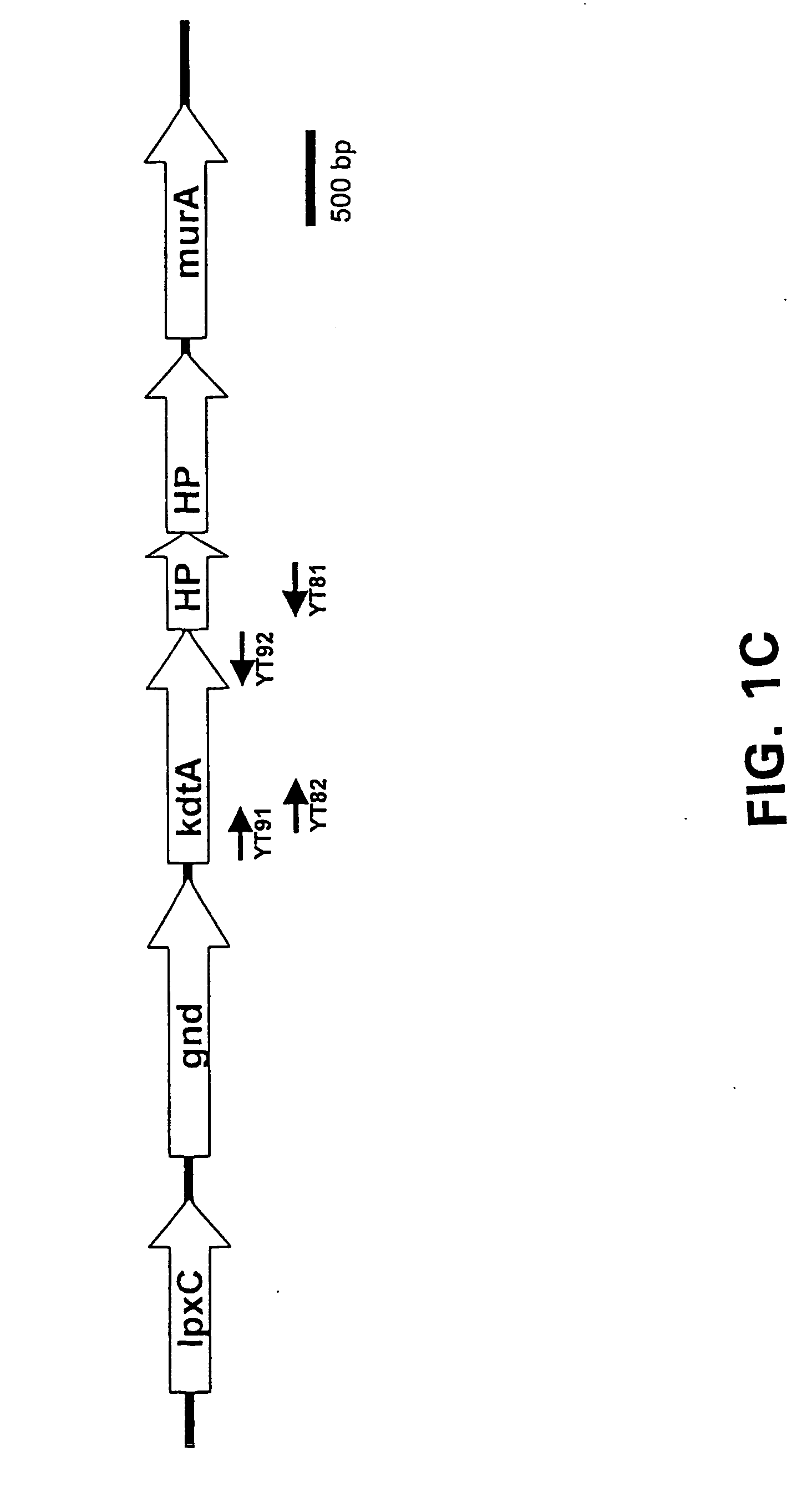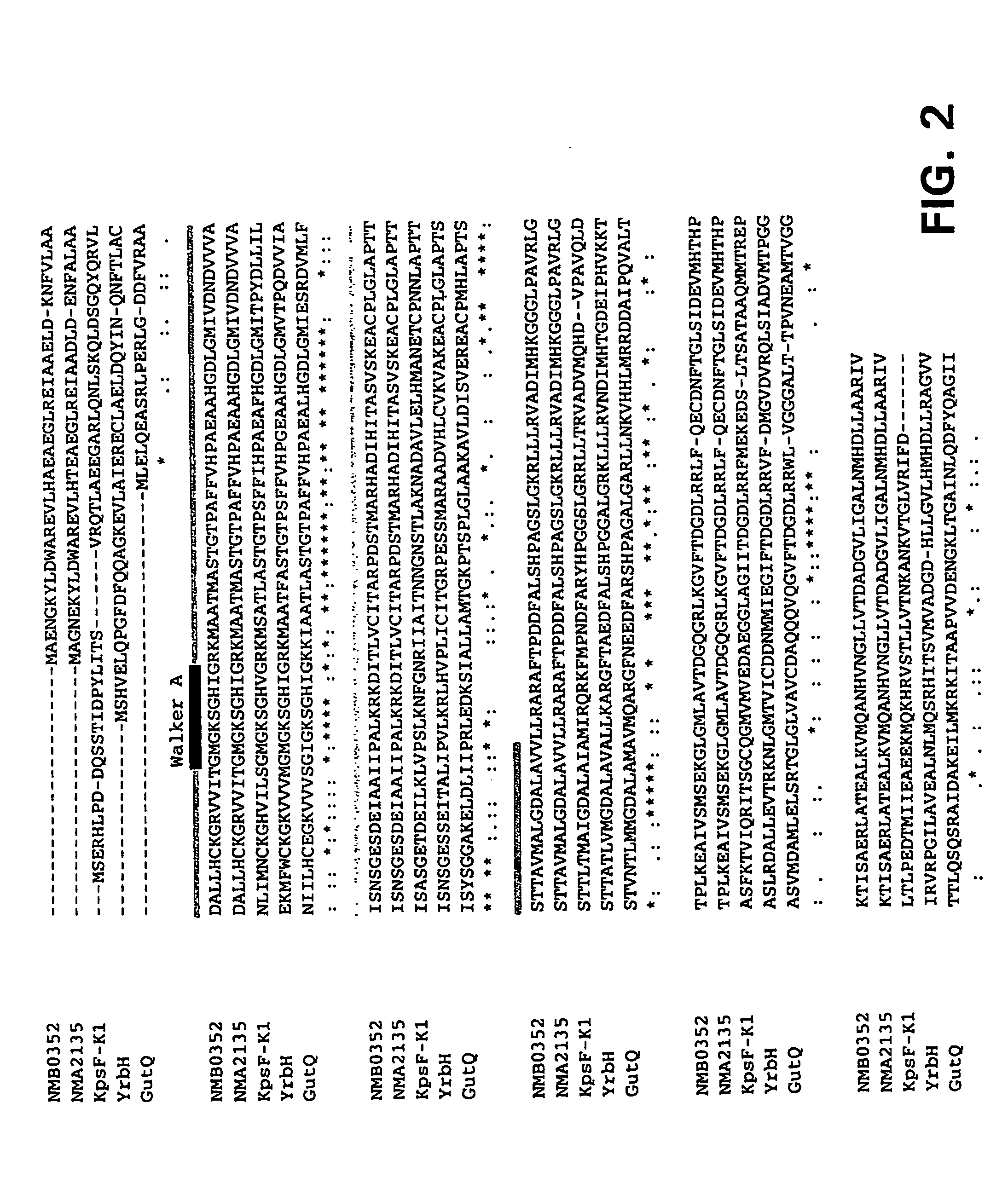Neisseria mutants, lipooligosaccharides and immunogenic compositions
a technology of lipooligosaccharides and compositions, applied in the field of neisseria meningitidis, can solve the problems of epidemic as well as endemic disease, the mechanism by which meningococcal los activates tlr4 to produce fulminant meningococcemia and meningitis is not understood, and the effect of reducing the number of bacterial strains
- Summary
- Abstract
- Description
- Claims
- Application Information
AI Technical Summary
Benefits of technology
Problems solved by technology
Method used
Image
Examples
example 1
Materials and Bacterial Strains
[0133] Bacterial strains and plasmids used in this study are described in Table 1. Monoclonal antibodies for meningococcal serogroup B (2-2-B), C (4-2-C), Y (5-2-Y) and W-135 (7-1-W) capsular polysaccharides were kindly provided by Dr. Wendell Zollinger (Water Reed Army Institute of Research, Washington DC). Monoclonal antibody M2 against Flag epitope and antibiotics were obtained from Sigma Chemical Co., St. Louis, Mo. Restriction enzymes were purchased from New England Biolabs, Beverly, Mass. Polyclonal antiserum to the Psf protein was raised in rabbits (Covance Research Products, Inc.).
[0134] The E. coli Neisseria shuttle vector was constructed as follows: the approximately 4 kb fragment of gonococcal cryptic plasmid was released from pEG2 (Christodoulides et al., 2000) by HindIII digestion, purified by agarose gel electrophoresis, and cloned into the unique HindIII site of a plasmid derivative of pCR2.1 in which the ampicillin resistance gene has...
example 2
Growth Conditions
[0135] Meningococcal strains were grown with 3.5% CO2 at 37° C. unless specified otherwise. GC base agar (Difco Laboratories, Detroit, Mich.), supplemented with 0.4% glucose and 0.68 mM Fe(NO3)3, or GC broth (per liter: 15 g protease peptone, 4 g KHP04, 1 g KH2PO4, and 5 g NaCl) with same supplements and 5.1 mM NaHCO3 was used. BHI medium (37 g / l brain heart infusion) with 1.25% fetal bovine serum (Gibco BRL) was used when kanamycin selection was required. Antibiotics concentrations (in μg / ml) used for E. coli strains were ampicillin, 100, kanamycin, 50, spectinomycin, 100, and erythromycin, 300; and for N. meningitidis were kanamycin, 80, spectinomycin, 60, erythromycin, 3, and tetracycline, 5. E. coli strain DH5α cultured on Luria Bertani (LB) medium was used for cloning and propagation of plasmids.
[0136] Meningococci were transformed by the procedure of Janik et al. (Janik et al., 1976), E. coli strains were transformed by electroporation with a GenePulser (Bio...
example 4
DNA Preparation
[0137] Plasmids were purified using Qiaprep spin miniprep kit (Qiagen) and PCR products with Qiaquick purification kit (Qiagen, Valencia, Calif.). Chromosomal DNA was isolated by the method of Nath (Nath, 1990). Restriction fragments resolved by 1% agarose gel were purified using a Qiaquick gel extraction kit (Qiagen, Valencia, Calif.).
PUM
| Property | Measurement | Unit |
|---|---|---|
| molecular mass | aaaaa | aaaaa |
| pH | aaaaa | aaaaa |
| temperatures | aaaaa | aaaaa |
Abstract
Description
Claims
Application Information
 Login to View More
Login to View More - R&D
- Intellectual Property
- Life Sciences
- Materials
- Tech Scout
- Unparalleled Data Quality
- Higher Quality Content
- 60% Fewer Hallucinations
Browse by: Latest US Patents, China's latest patents, Technical Efficacy Thesaurus, Application Domain, Technology Topic, Popular Technical Reports.
© 2025 PatSnap. All rights reserved.Legal|Privacy policy|Modern Slavery Act Transparency Statement|Sitemap|About US| Contact US: help@patsnap.com



